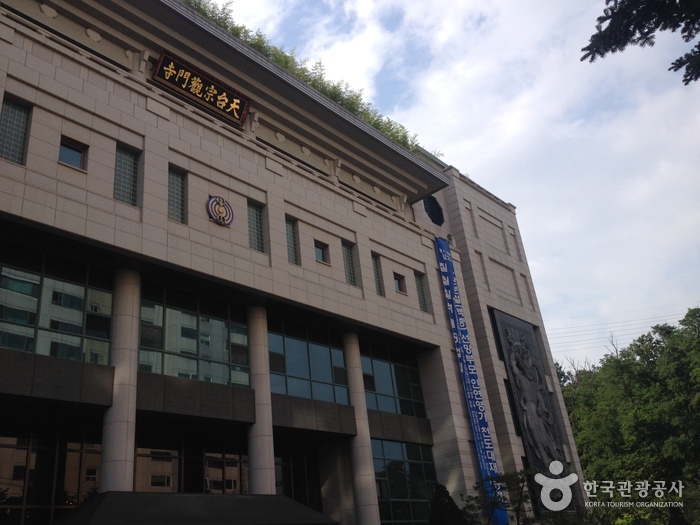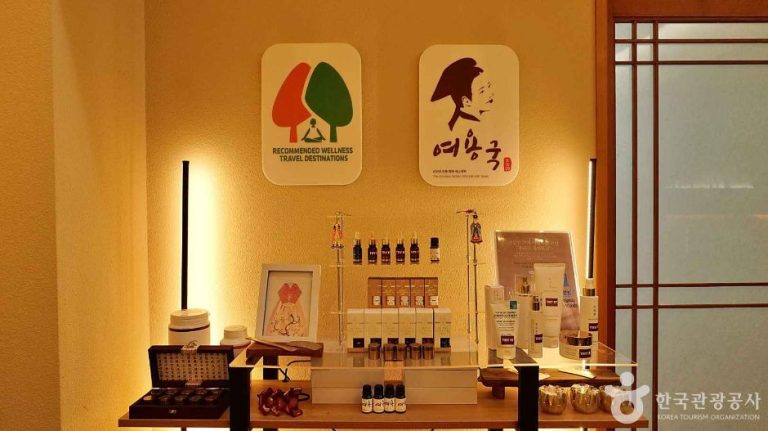Chungmu Arts Center (충무아트센터)
Chungmu Arts Center (충무아트센터)
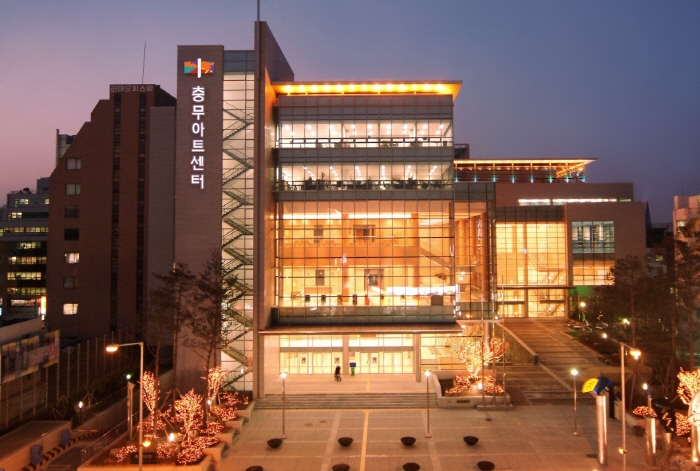 – Homepage
– Homepage
www.caci.or.kr
– Tel
+82-2-2230-6600
Chungmu Arts Center is a complex cultural facility with an optimal conditions for watching performances. It has a large theater, a medium theater (black), and a small theater (blue). It also boasts great galleries, studios, and a swimming pool, attracting numerous visitors. In addition, one can enjoy performances of various genres, including classical music, plays, musicals, and concerts. Located close to Dongdaemun, it has good accessibility.
– Address : 387, Toegye-ro, Jung-gu, Seoul
※ Presentation Information
– Capacity
Large theater (1,255 seats), Medium theater (Black) (325 seats), Small theater (Blue) (218 seats)
– Information and Guides
+82-2-2230-6600
– Parking
Available
– Parking Fee
[Performance attendee / Academy / Gallery / Convention Center / Sports Center members]
Discounted coupon available
[General parking]
500 won for 10 min.
– Day Off
N/A (Open all year round)
– Usage Fee
Varies by performance
– Operating Hours
Varies by performance
– Scale
Site area: 9,170.50㎡ / Buidling – Total floor area: 36,666.84㎡
– Tour Duration
Varies by program
– Industry Information
Performances (operas, musicals, plays, concerts, dances, etc), Exhibitions, etc.
– Reservation for Foreigners
Through the website
– Online reservation
– Phone reservation (+82-2-2230-6601)
– On-Site reservation (First floor of the Chungmu Art Hall: Service Zone)
– Reservations
Through the website
– Online reservation
– Phone reservation (+82-2-2230-6601)
– On-Site reservation (First floor of the Chungmu Art Hall: Service Zone)
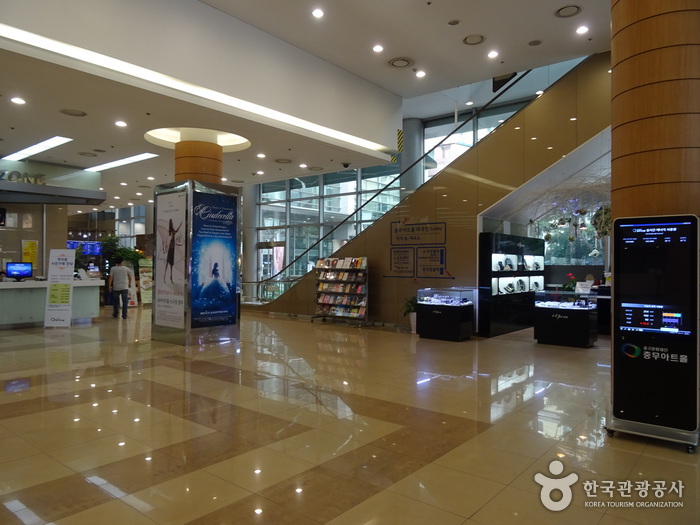
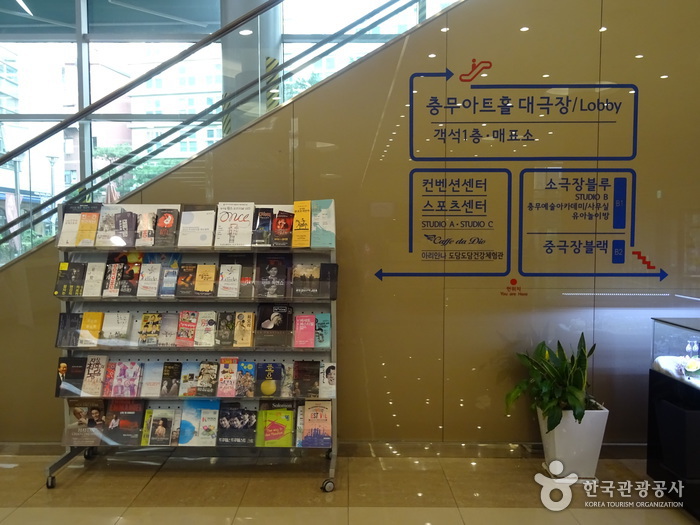
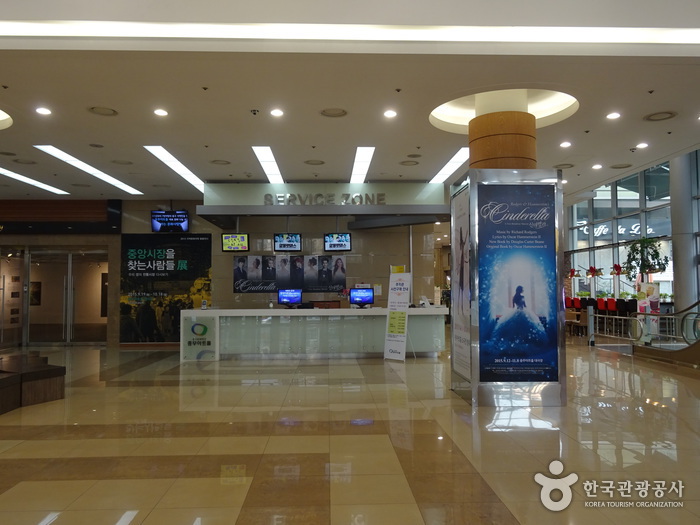

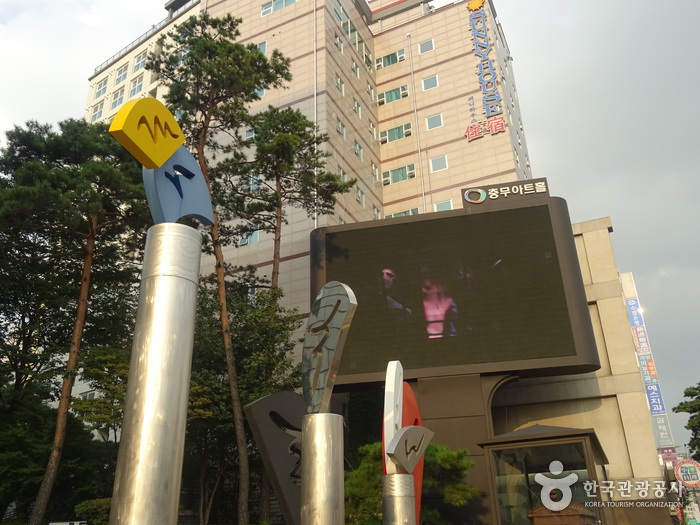
◎ Nearby Tourism Infobox
⊙ Olive Young – Sindang Station Branch [Tax Refund Shop] (올리브영 신당역)

– Homepage
www.oliveyoung.co.kr
–
⊙ Mabongrim Halmeonijip (마복림할머니집)

– Tel
+82-2-2232-8930
Mabongrim Halmeonijip specializes in instant tteokbokki. The spicy and flavorful tteokbokki with gochujang sauce is their signature dish. It is served in a hot pot, it can be customized with rice cakes, fish cakes, extra ramyeon noodles, mandu, and other various ingredients. The restaurant is so famous that it is said to be the original restaurant of tteokbokki, and has been featured in several TV programs.
⊙ I Love Sindangdong Tteokbokki (아이러브신당동떡볶이)

– Homepage
www.ilovesindangdong.com (Korean only)
– Tel
+82-2-2232-7872
Situated in Sindang-dong Tteokbokki Town, I Love Sindangdong Tteokbokki is a famous tteokbokki restaurant. Tteokbokki is a typical Korean street food, consisting of rice cakes made with flour or rice flour and stir-fried in red chili paste. The rice cakes are simmered in a broth with seasonings, along with fish cakes, vegetables, boiled eggs, mandu, and other ingredients. The best thing is that the dish can be customized with various ingredients such as cheese, ramyeon noodles, chewy noodles, and ham. Leftover broth can be fried with rice for a satisfying meal.
⊙ Sindang-dong Tteokbokki Town (신당동떡볶이골목)
View detailed guide on Korea Trip Guide →
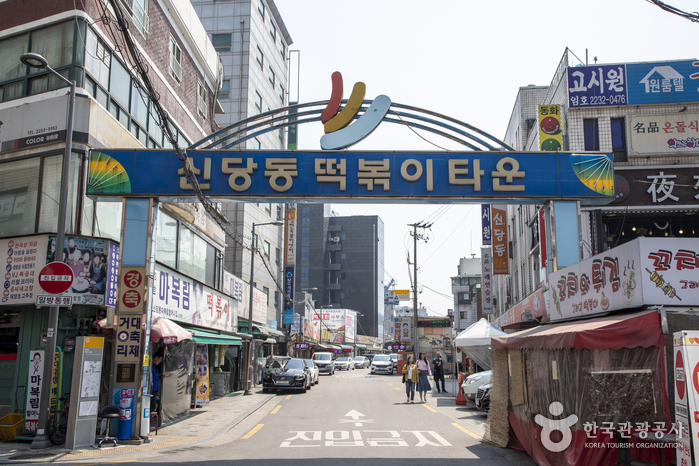
– Tel
+82-2-2236-9135
Sindang-dongTteokbokki Town started in the late ’70s, although the alley did not become famous until the ’80s. At that time, each restaurant had its own DJ booth, with the image of the “cool DJ” who played the music becoming a symbol of Sindang-dong Tteokbokki Town. In addition, this period also marked the prime time of high school baseball where students would crowd the streets on days when Duksoo Commercial High School and Sunrin Commercial High School (now Sunrin Internet High School) played against one another. Although these high school students have aged, they continue to visit the area, reliving their youth and continuing to indulge in the specialty tteokbokki.
However, some claim the history of this alley began in the 1950s. The owner of Mabongnim Halmeoni Tteokbokki restaurant says tteokbokki was being sold as early as 1953 as the area used to be home to Donga Theater and she sold tteokbokki, corn and potatoes to those visiting the theater. At first, tteokbokki was simply made with gochujang (red chili paste) but as time went by, cooks decided the dish could be more than just a snack. By adding ingredients like eggs, cellophane noodles, fish cakes, instant noodles and more recently squid, prawn and cheese, tteokbokki can be made more delicious and turns this beloved snack into a full meal.
⊙ Himart – Cheonggu Branch [Tax Refund Shop] (하이마트 청구점)

– Homepage
www.himart.co.kr
–
⊙ Dongdaemun History & Culture Park (동대문역사문화공원)
View detailed guide on Korea Trip Guide →
– Homepage
www.ddp.or.kr
Dongdaemun History & Culture Park is a park established on the former site of the Dongdaemun Stadium. It serves as a thematic park showcasing the history and culture of Seoul, while also providing a space to experience modern design and culture. During the park’s development in 2008, numerous artifacts from the Joseon dynasty, including The Two Floodgates, the Chiseong Castle, Military Training Agency, and over 1,000 relics from the Joseon era, were excavated. Alongside the park, there is the Dongdaemun Design Plaza (DDP) and the Relic area.
⊙ The Souvenir Fair (2025 대한민국 관광기념품 박람회)

– Homepage
kto.visitkorea.or.kr
– Tel
+82-10-8315-5434
The Souvenir Fair brings together various companies and local governments to showcase a variety of souvenirs, both traditional and trendy. Visitors can freely explore the exhibition space, enjoy souvenir shopping, and take part in various programs. Highlights of the fair include an exhibition of competition-winning works, a zone featuring outstanding local souvenirs, and a special exhibition of overseas souvenirs.
⊙ Gwanghuimun Gate (광희문)
View detailed guide on Korea Trip Guide →

– Homepage
www.junggu.seoul.kr
– Tel
+82-2-3700-3900
Gwanghuimun Gate is said to have been originally constructed in 1396, the 5th year of King Taejo, at the southeast of the capital city. It was often referred to as Sugumun Gate (water channel gate) and was actually used as a Sigumun, literally meaning “corpse gate,” as funeral processions passed through this gate when exiting to the east.
During the Imjin War (1592-1598), the fortress gate was destroyed to such a degree that it made finding the original location close to impossible. Nevertheless, reconstruction efforts were started in 1711 (37th year of King Sukjong) and the gate was restored together with the gate’s watchtower. Gwanghuimun Gate remained intact even when the fortress walls were demolished to build tram tracks during the Japanese occupation, but it was later damaged during the Korean War and left neglected. In 1975, restoration work was carried out to relocate Gwanghuimun Gate to a site 15 meters south of its original location since it stood in the middle of the road.
⊙ Dongdaemun Design Plaza (동대문디자인플라자 (DDP))
View detailed guide on Korea Trip Guide →
– Homepage
www.ddp.or.kr
– Tel
+82-2-2153-0000
Dongdaemun Design Plaza (DDP) has a meaning of Dream, Design, and Play. It holds various exhibitions, fashion shows, forums, conferences, and other domestic and international events. The building complex is divided into sections, which are named Allimteo, Beaumteo, Sallimteo, DDP Design Museum, Design Market & Eoullim Plaza, and Dongdaemun History & Culture Park. Designed by world-renowned architect Zaha Hadid, the building’s exterior attracts the attention of many photographers with its delicate curves and bold shapes.

